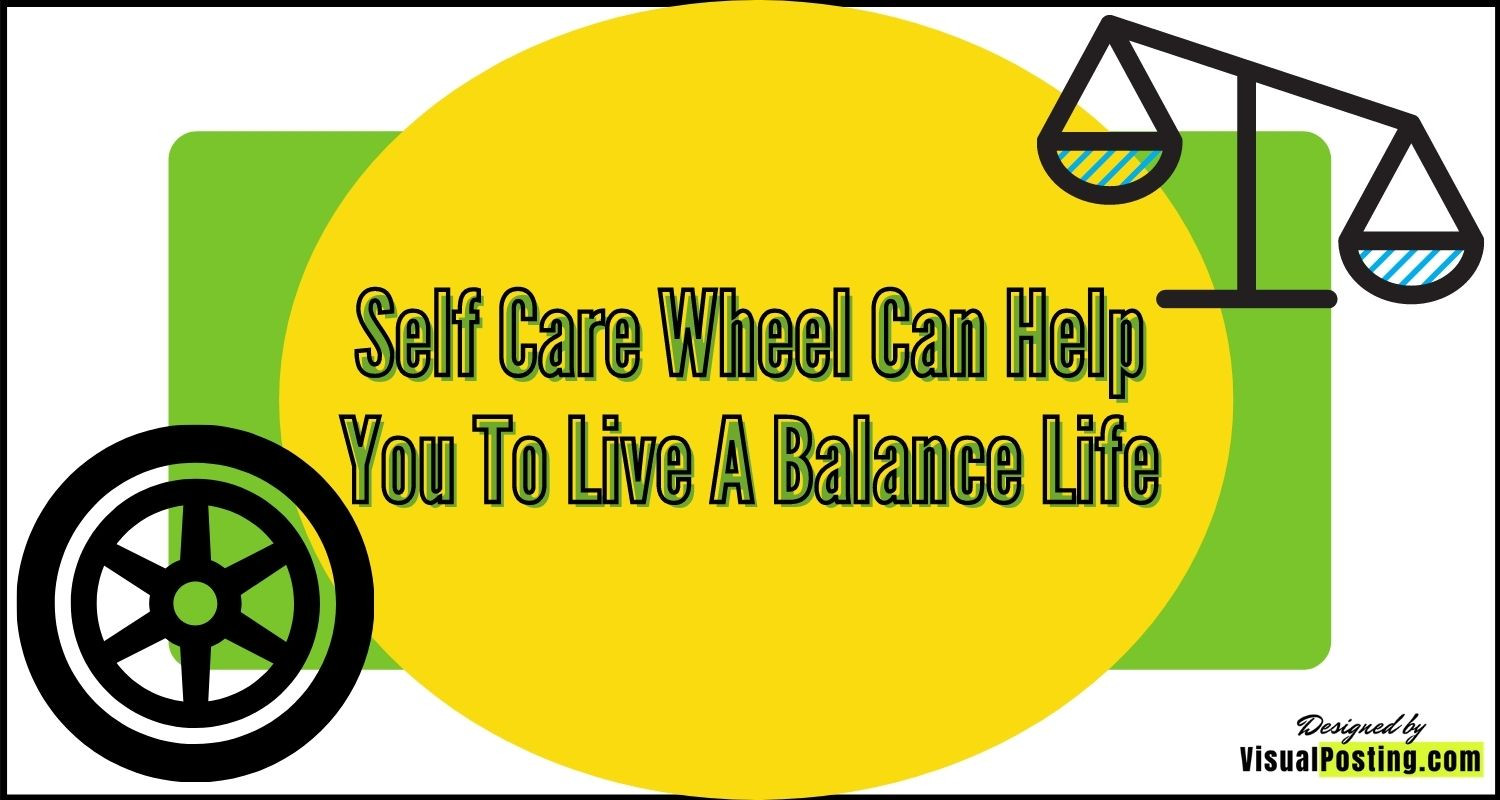
Self-care wheel comprises of all the entire gamut of activities that spin about loving yourself. Just like you do any other job in life to take care of the wellbeing of your family, self-care activities are also wellness jobs in themselves.
Self-care routine, therefore, demands your care and concern. It needs your conscious and voluntary involvement and your true self in delivering with utmost decency and righteousness.
It is a general human tendency that this quote on life is believed to be true when it comes to self-care assessment. The first half of our life is ruined by our parents and the second half by our children. So, at any given stage in life, any particular human doesn’t get the needed time to think of caring for themself.
Life is understood to be in the vicious circle of always thinking for the society, thinking what others think of you, rather than what the inner you think of yourself.
Self care wheel of wellness
A self-care wheel is like your wheel of fortune. In here, you cover various categories with regards to up keeping yourself by empowering, making positive affirmations and busting out your stress, and gaining control over many other aspects of your life, to ensure a fit you. By caring for yourself, you attain satisfaction in life for gifting yourself the healthy you. This, however, demands your daily attention.
Aspects of the wheel of wellness
A self-care wheel is usually centered around 6 vital approaches employing which you are said to attain balance in life. They are categorized, as stated below.
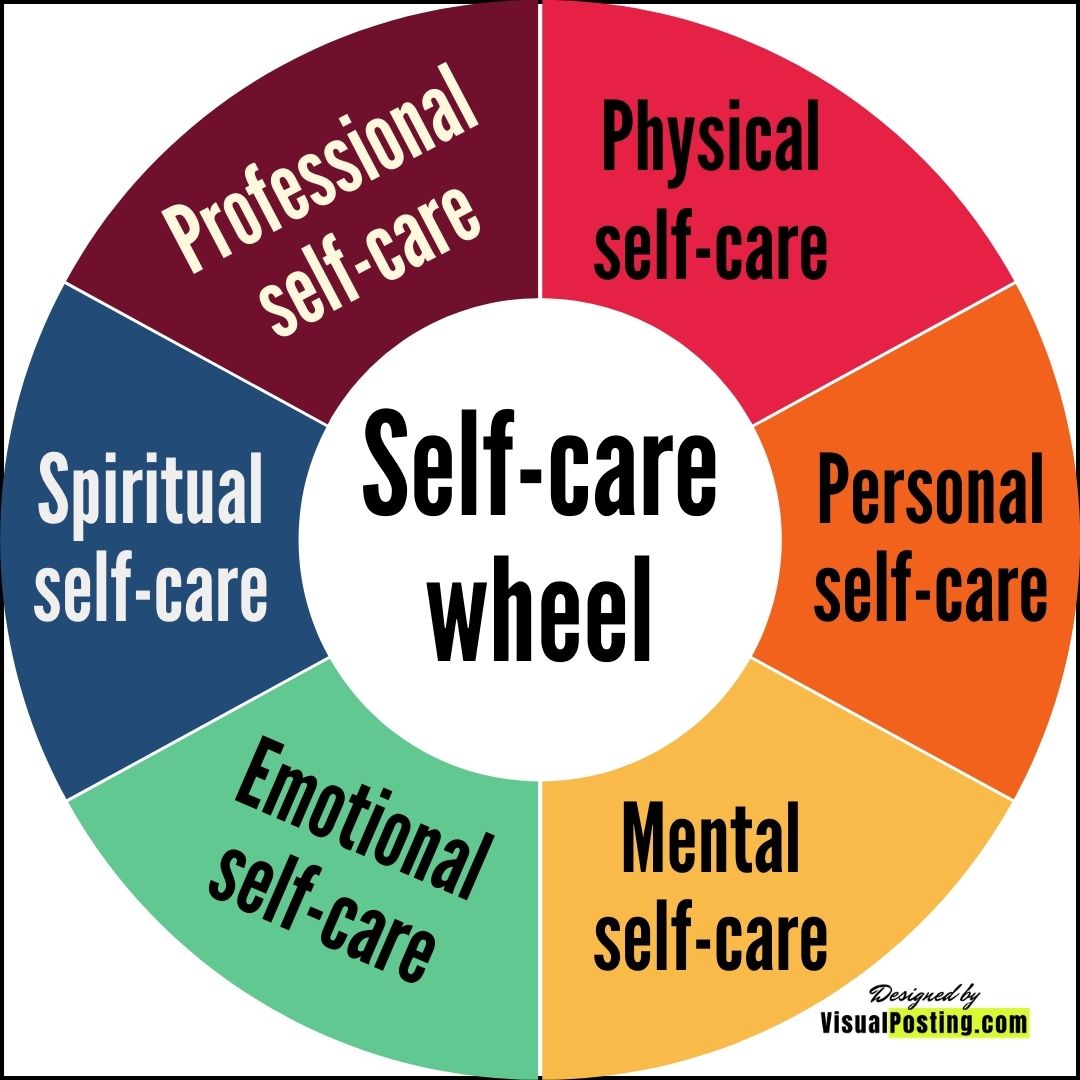
1. Physical self-care
This is where you take care of your health. Sit in silence and make a self-care assessment with regards to your biological state of health. By doing so, you put yourself under regular medical surveillance. You eat healthily and exercise better. You grab enough sleep to take sufficient rest, to rebalance your mind and body.
You also take a break from the busy schedule and move out for trips and take time off for vacations and drives. You even undergo acupuncture, massages, and parlor treatments. You drive yourself into nature, go for walks, and engage talks with the inner self.
2. Mental self-care
Under mental self-care activities, you broadly self reflect the real you to the world. You even approach therapists who help you do so. You undertake acts of diary writing or cultivate the habit of journalizing with gratitude. You even draw out the inner you, picking to work on things that bring you happiness at heart.
You carve out the creativity and imagination in you. You read a lot of self-help books and even join charity works. You offer help to others and do not hesitate to seek help if needed. Overall, you develop a positive attitude towards life.
3. Emotional self-care
Layout an emotional self-care plan and take positive affirmations to balance your life. You begin to love yourself and express being kind and compassionate with the inner you. You even care for your emotions and anxieties either by convincing them or confusing them. But you certainly engage in pursuing a hobby that interests you and proposes to the one in you.
You buy your own self. You watch funny videos to uplift your mood. You spend time with your pet and also practice generosity in life.
4. Spiritual self-care
When you self reflect on your true self with your thoughts and actions and incline yourself towards divinity, you are said to be spiritually caring for yourself. You dash into nature. You meditate, sing, dance, pray, play, and do all that possible to detach from the world of worries.
You practice yoga, find a spiritual guide, engage in self-care activities like charity works, and even inculcate the habit of forgiving the mistakes made by you or others. You play with children and get lost in nature too.
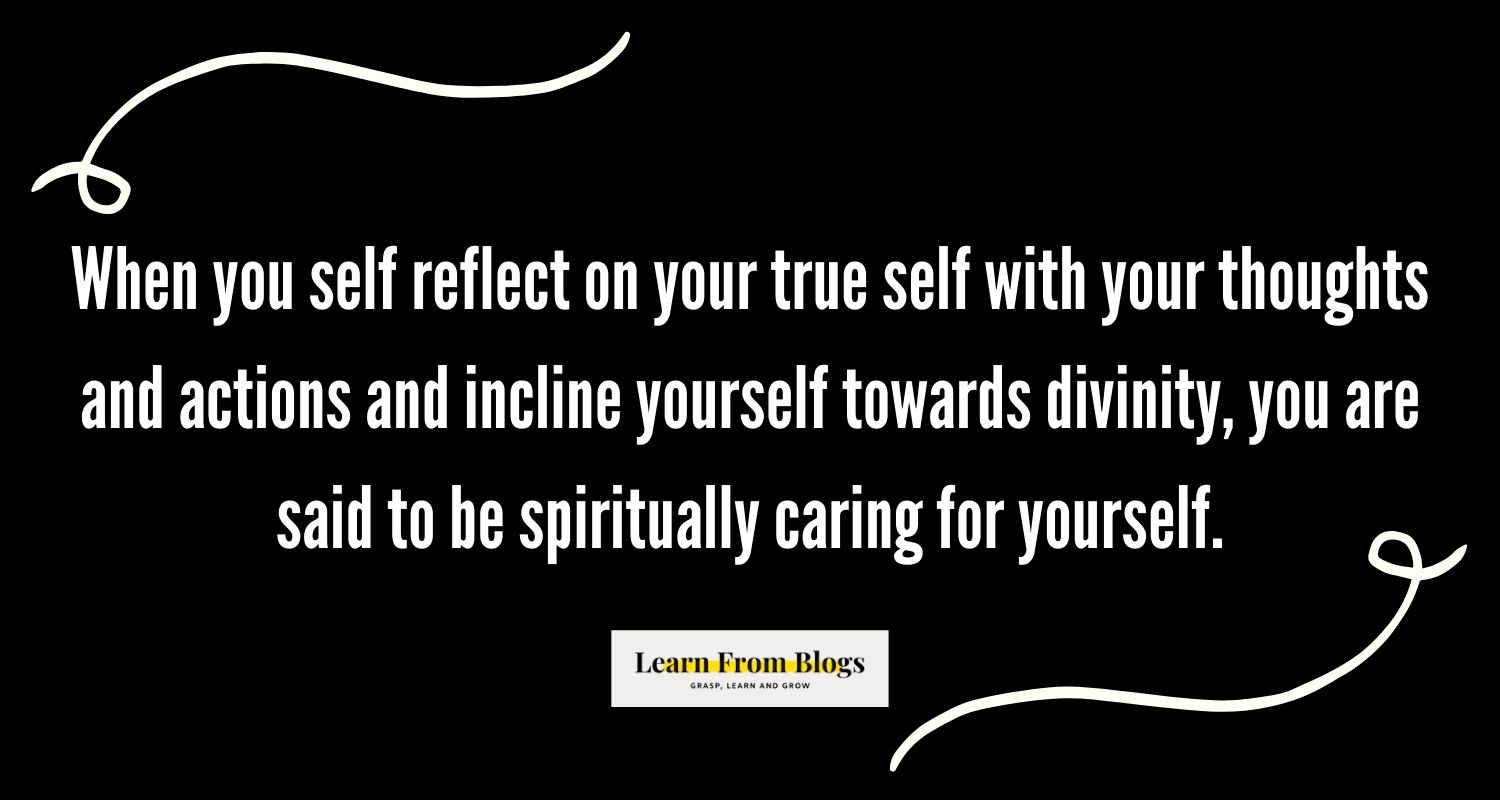
5. Personal self-care
Every single day as you wake up from bed, you assess where you are in life. You look back at yesterday to know where you are today. You look forward to tomorrow to examine how much you need to live and drive your life today. You tell yourself what exactly you want in life.
You jot down goals and action plans to reach your goals. You make friends. You spend time with family and loved ones. You tell your relations how much you care for them by walking the path of a healthy self-care plan.
6. Professional self-care
On the professional front, too, you take care of yourself by undergoing the phase of self-care assessment against your present state of health. You know your boundaries. You know how to carry out group talks. You tune up your body language. You always carry a smile.
You do not carry personal stress to work. You even master the talent of saying a polite ‘no’ when the situation demands. You maintain healthy relationships with your peers, superiors, and subordinates. You avail leaves, and you support your co-workers and engage in team activities too.
Self-care paradigms
Below is a list of self-care activities that you should choose to approach to gain overall well-being.
1. Do something that makes you happy, of course, without hurting someone or damaging something.
2. Pick an important task of the day and finish it off right away.
3. Make a list of things you are grateful for in your daily life as part of your self-care routine.
4. Take a parlor appointment and go for a massage or hairstyling or manicure etc.
5. Breathe the fresh air from the pollution-free greenery around.
6. Shop for your favorite item or shop for something to be gifted to your loved one.
7. Listen to your favorite music or dance for your favorite rhythm.
8. Write thank you message and give the person a surprise note of gratitude.
9. Spin the self-care wheel today. Identify a mistake you made. Apologize for the same. Ask for self-forgiveness as well as seek forgiveness from the one whom you hurt.
10. Heal broken relationships by spending time together and sharing your inner voices.
11. Pick items that you haven’t used for long. Make something useful with these items by unlocking the innovator in you.
12. Donate the clothes you no longer use and exhibit an act today that your self-care wheel talks about.
13. Work and spend time on the society you live in.
14. Plant more trees in your garden and community.
15. Make eye contact with a pleasant smile, be it, anybody.
16. Take your pet out for a walk. By implementing steps of an effective self-care assessment plan, learn from your pet the life skills it naturally imbibed.
17. Give up a bad habit of yours and meet the primary need of someone with the money saved.
18. Make calls to your family, friends, parents, ex-colleagues, cousins, etc. just to say hi.
19. Try to bring out the artist in you. Draw pictures out of your imagination and share it with friends.
20. Grab a cup or two of green tea each day to rinse off the toxins from your body.
21. Clean up your storeroom and pick a few things that you can put to use.
22. Let your self-care wheel want you to appreciate someone in a group now.
23. Keep yourself off from social media for an hour each day, just to take more care over yourself.
24. Finish reading the book that you have been trying for long to find the time.
25. Make your favorite meal, and enjoy the feast with loved ones.
26. Gift yourself new outfits. Dress up and showcase to the world.
27. Visit a busy place, sit and do nothing, except for observing what’s happening in there. This works pretty well when imbibed in your self-care routine. You get a lot of refreshed and bounce back to life, reenergized your mind and body.
28. Watch a funny video, especially those of cats or dogs. They just spoil your sick mood and turn you ON towards life, instantly.
Self-care blueprint
To ease your work, a step by step guide to drafting a blueprint that helps you come up with strategies and an appropriate self-care plan is mentioned below.
1. Find a peaceful place and a peaceful time to connect to your inner thoughts.
2. Understand from various sources as to why self-care is really that important in life.
3. Observe your own behavior from the past and present.
4. Make a list of all the triggers that result in you being restless by mind and body.
5. Identify from learned sources how you can intelligently seize these triggers.
6. For every trigger, develop an action plan to overcome the next time it pops up.
7. Commit to your inner self that you are going to execute the plan, come what may.
8. Implement the self-care plan and also note the changes in the present against the past.
9. Sit in isolation and evaluate what happened and how you handled it.
10. Record all these events and repeat them with a sense of self-discipline.
Therefore, by understanding where things went wrong and how smartly you can handle them, you can balance the self-care wheel of your life. Self-care hence stands above all.
Self-care tips
Rest enough to bounce back with energy to work.
To be able to fulfill the needs of everybody around you, you need to first fulfill the desire of your soul. Ensure to give your body and mind sufficient rest every single day and include it in your self-care routine. Because, when you wake up the next morning, your mind and body are ready to spring back unto work with magnified energy levels and freshness in mind.
If possible, take power naps during the day to keep your work going all day long with the continued power and momentum to take off for the best.
Spend the time now to pacify future problems.
You need to consciously take out a minimum of fifteen minutes every single day to speak to your inner voice. Know what it wants, follow your heart at times rather than what you mind provokes you with. Understand your health better than anybody else. Begin to work in the vicious circle of the so-called self-care wheel to set future potential problems quiet.
Don’t ignite now that might catch up later, in terms of ill health. If you cannot help yourself, approach a therapist. Don’t however, delay presuming things to be taken care of by the expert even if they are deferred from your end in the first place. Work in cohesion to yield fruitful results.
Related Opinion
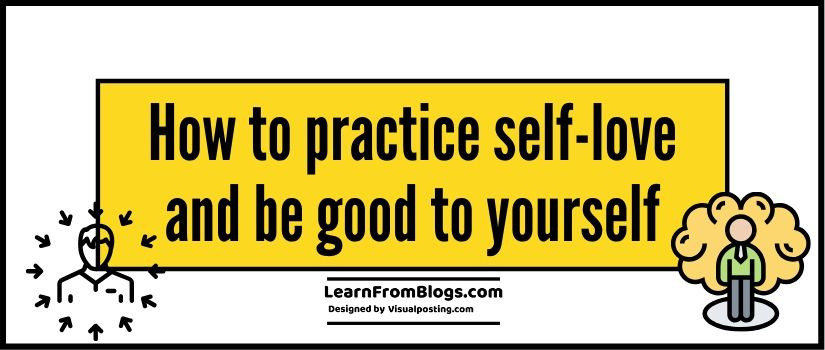
Practice self-love to believe in yourself. You love yourself and consider to be a valuable and commendable person. You have a positive opinion and judgment in your own self. You believe in self-confidence and set a place for self in this vicious world.Compliment yourself. Congratulate and applaud for your merits. Console if need be. But respect yourself and love more day after day. You will certainly meet, the better you in no time.You are the best person to take care of yourself. By caring for yourself, you also care for the world around you. Because your thoughts and actions are...
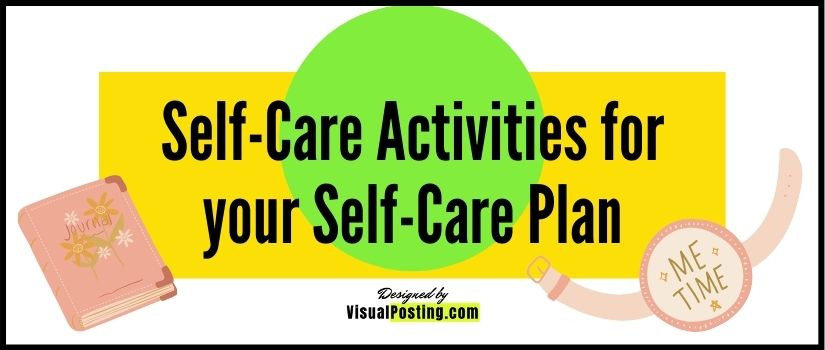
“Self-Care is so important. When you take time to replenish your spirit, it allows you to serve others from the overflow.” – Eleanor Brown On that note, we like to share about 160 self-care activities to add to your self-care plan. We are sure it is interesting and worthwhile. Emotional Self-Care Activities: 1. How you talk to yourself matters. Don’t give voice to your negative inner-critic. 2. Make peace with your past. Let nothing or anyone break you with your past. There is no better emotional self-care activity for you than this. 3. Be authentic and be genuine in your...

Life is always occupied with bundles of tasks that you keep doing day in and day out. Most of these tasks are routine and monotonous, while few others are unique. While a majority of them are compulsory ones, few still remain an option for you to pick. One such simplest mundane and unchanging task is the task of showering dedication to take care of yourself. It is easy said than followed. Because, by being busy from dawn to dusk, you generally pay low levels of priority when it comes to taking care of yourself. You even skip your gym, exercising,...
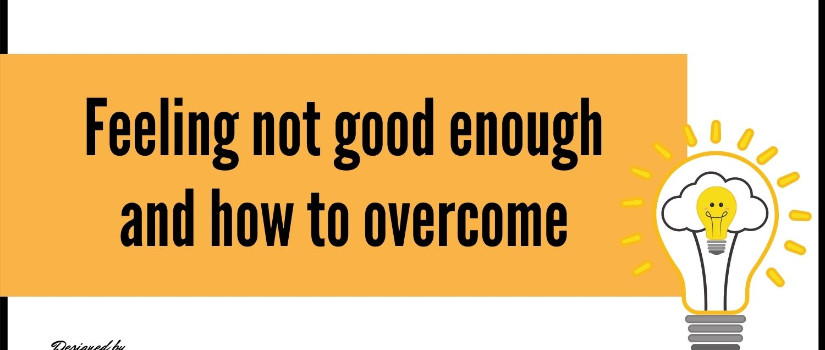
Life has been defined by various personalities in numerous ways. Life to each is different because everybody is unique in this world. Therefore, don’t just get carried away by the definitions posted by many on life. Define your life in your way, depending on the direction it takes you. Erase the clutter of feeling not good enough, and now with a clear mindset, check what is stopping you in progressing in life. By listing down the reasons for not feeling good, you can work out how to overcome them.Here are a couple of ways in which you can uplift your...



Radhika pandit
The self-care wheel should be made a part of life. But binding yourself to the monotonous and routine activities from morning to night, you make yourself so pre-occupied that you manage to handle everything else, at the cost of your health. You skip food and fitness to deliver other tasks for which you are accountable to the world.
Since self-care is the only area where you are answerable to your own self and less to others, you subconsciously list it down on the lighter side of life.
Self-talk and self-care activities are worth commendable in this modern era. Because, most of the times, you tend to focus on the work, especially those on your professional front and your personal commitments for your loved ones. Delivering so, you tend to forget about yourself along the way.
The self wheel of overall well-being
A self care wheel talks about how much you need to take care of yourself and under what spheres of life. Self-care is really important to maintain a healthy life, to meet your needs, wants, desires, ambitions, and all that you dream of in life.
Up keeping of self is to be given a higher order of importance, and practicing such acts are highly essential in your everyday self-care routine.
Dimensions of a wellness spinner
A self care wheel is a swivel of your wellness in life. Such a wheel usually is balanced around 7 significant dimensions that stay interconnected and keep you tuned to your fitness court. To help you easily reckon them, they have been depicted hereunder.
1. Biological wellness
Biological wellness involves physical workouts that you do to keep yourself fit and focused on life. By eating a healthy diet, maintaining balanced nutrition levels, sleeping for the right hours, busting out your stress and anger without effecting self or surroundings, all of these pave the way to make you biologically strong.
Besides these, an effective self care routine lets you design for regular health checks, including dental checks, and also reaps you a balanced life. At the same time, you have to encourage your loved ones to do so.
2. Social wellness
Social wellness involves you to maintain hail and healthy interpersonal relationships. You need to support others by guiding them and by working out your own self care assessment strategies. You also need to groom yourself in order not to harm your environment.
Relieve yourself of the stress-causing social works so that you extend support by alternate means. It is better to avoid the pressure and work on your strength areas, rather than leaving negative impressions in the community.
3. Financial wellness
Financial wellness involves you taking care of your incomes as well as expenses. With a self care plan in place, design your financials for a safer tomorrow. Only when you shield yourself and your loved ones with a monetary cover, will your future also be secured. Learn to be brand loyal and a good consumer. Take steps to save pennies for the brighter side of life.
4. Ecological wellness
Ecological wellness involves you to actively care towards the self care activities that also befit the environment. Keep your space and surroundings clean and organized. Declutter all those objects that you haven’t been using for quite some time, or you don’t need it at all. Recycle trash regularly—volunteer to clean up your surroundings that help to improve the health for all.
5. Mystical wellness
Mystical wellness involves your spiritual participation in terms of aligning with the values, beliefs, and ethics you instill in your life. Your philosophies determine your lifestyle. The same is, in turn, looked up by people at you.
Therefore, set a preferred approach towards life by aligning yourself towards divinity. A self care plan, like this, helps you stay calm and think with a positive mindset, thereby assisting you in making wise decisions for the benefit of self and surroundings.
6. Responsive wellness
Responsive wellness involves your conscious reactions to situations. You sustain overall well-being when you gain emotional control over your senses.
By monitoring and regulating your stress levels and by aligning yourself towards the self care wheel that you crafted and customized, you inculcate balance in life. You understand better what to do and what not, how to do, and how not to do. You grab reliability and trustworthiness, too, during the process.
7. Intellectual wellness
Intellectual wellness involves you to stay curious by always putting yourself in the learning curve. Cultivate the zeal towards thirst for knowledge. Engage more in creative and innovative arts and activities.
Read and read more to improve your intellect. This can be a distinguishing and a remarkable self care plan. But be aware of what is happening in and around. Keep yourself abreast of times by being alert at social and political issues. Join groups of like-minded people to enhance your brainpower.
Wellness prototypes
Self-care is thus a voluntary and intentional action to meet the needs of your life. Below stated are substantial self care activities that you should incorporate in life and those that you should be doing to avoid a breakdown in terms of health and progress in life.
1. Drive into the past and look back at your earlier photos. Make a collage to refresh your mind.
2. Start writing your own autobiography. Take help from family and friends too.
3. Be spiritual in life and offer prayers to God to express acts of gratitude towards the world.
4. Add fruits and nuts to your daily self care routine.
5. If you have the practice of writing with the right hand, then switch your hand and write a few lines about yourself with the left hand.
6. Try to write something in a reverse manner or from the bottom right corner of the page, moving towards the top left.
7. Pull out all the items in a room and reorganize them in a different manner.
8. Boost your mood with a candlelight dinner and light playback music behind.
9. Stand in front of the mirror and talk a lot to cleanse off the sick mind and body from you.
10. Roll the self care wheel and pay gratitude to yourself. Also, exhibit self-forgiveness and do congratulate for a good job you did today.
11. Post a word of applaud to someone on a social networking platform.
12. Write a product review on the internet.
13. Make an IVRS phone call and talk to a customer care executive.
14. Pick a challenging task and attempt to handle the same with care and concern.
15. Look at the night sky. Drive your self care wheel and get lost in the space flying in between the stars.
16. Take a lot of selfies and share with near and dear.
17. Learn a new game today, even if it were to be a game in a smartphone.
18. Spend time and develop intelligence to solve jigsaw puzzles, or Rubik cube’s or build something out of Legos or paint your imagination.
19. Go back to the past and try to know the sanctity of the day.
20. Exercise regularly to help your body stay fit, healthy and strong, and to face the vulnerabilities around boldly. Cultivate such a self-care routine to help yourselves in living a balanced life.
21. Ask yourself what big you did today that made someone happy because of you.
22. Go for a long drive to explore the regional you.
23. Look out for positive affirmations and inspirational quotes around and rehearse them in your mind.
24. Meditate to calm down your senses. Also, practice yoga to live in the moment.
25. Learn something new today. Either a new word from a known language or a new stroke from a new language.
26. Cultivate the habit of diary writing. Record events, happenings, finances, happy moments, learnings, and any other takeaways of the day.
27. Think different. Roll the self care wheel and act differently. Do the same task that you do every day, but today, do it differently.
28. Have the courage to stand by the right actions in life. Exhibit the true you to the world.
Self-care tips
Jotted down hereunder are a very few, simple and yet exemplary self care activities in which you can take utmost care of yourself, leaving behind no room for cross-talks and procrastinations.
Balance your life.
To spend time with yourself, you should have peace in mind and a well-structured self care assessment plan. You derive peace when you maintain an equilibrium between your professional life and your very personal life. Every task that you need to work out a record it as per the order of priority.
Check your previously written priority list and try to fit in the new task, without disturbing your personal life, and needless to say the professional life too. Hence, self-care is to be seated in the creamy layer of your top priorities layered cake. It is highly important for maintaining the overall well-being of the self and others around.
Learn to say a polite ‘no.’
You are occupied all the time and are always topped up with tasks and additional tasks that keep piled up every now and then. And to deliver them, your weekdays and work hours alone aren’t sufficient at times. You might need to work beyond the stipulated hours, keeping aside the self care assessment idea. At times, you might have to sacrifice on your personal lookouts.
Despite keeping off so many other aspects aside, you still cannot deliver all your tasks within the right possible time. Therefore, execute a self care assessment behavior by taking a conscious call to say a polite ‘no’ when tasks keep adding up. Say it with confidence, trust, and honesty at heart. Self-reflect the reliable and transparent you. Convince the other person and exchange talks to soothe either party.
Exhibit the organized you.
Wherever you occupy a space, be it at the workplace or at home, organize your belongings. By clearing the clutter from time to time, you feel rebalanced and refreshing to jump into doing your tasks. With fresh minds comes fresh ideas. You can, therefore, work towards giving your best in whatever you do. And when you give your best by spinning the self care wheel every day, you automatically develop self-love, self-respect, and self-care acts that benefit you and the people around you.
You should also keep doing things in a systematic manner. By prioritizing your work, you understand the significance of each task. The vitality of the work, in turn, teaches you a unique approach to proceed with the same. Thus the habit of a self care plan as this keeps cultivating day after day as you keep taking proper care of yourself.